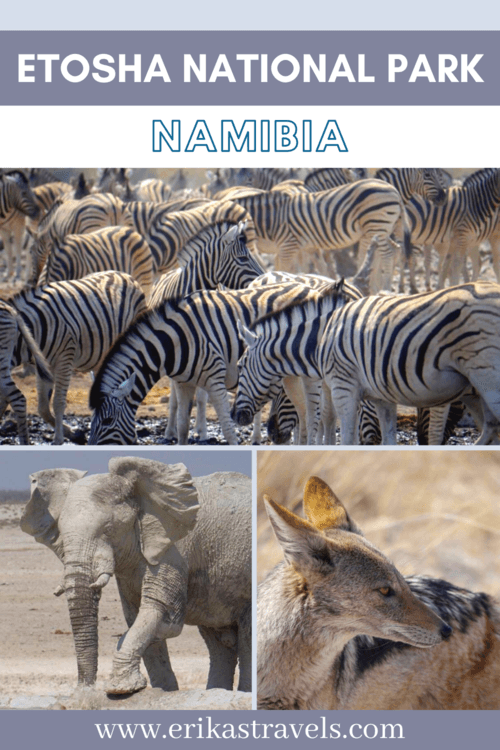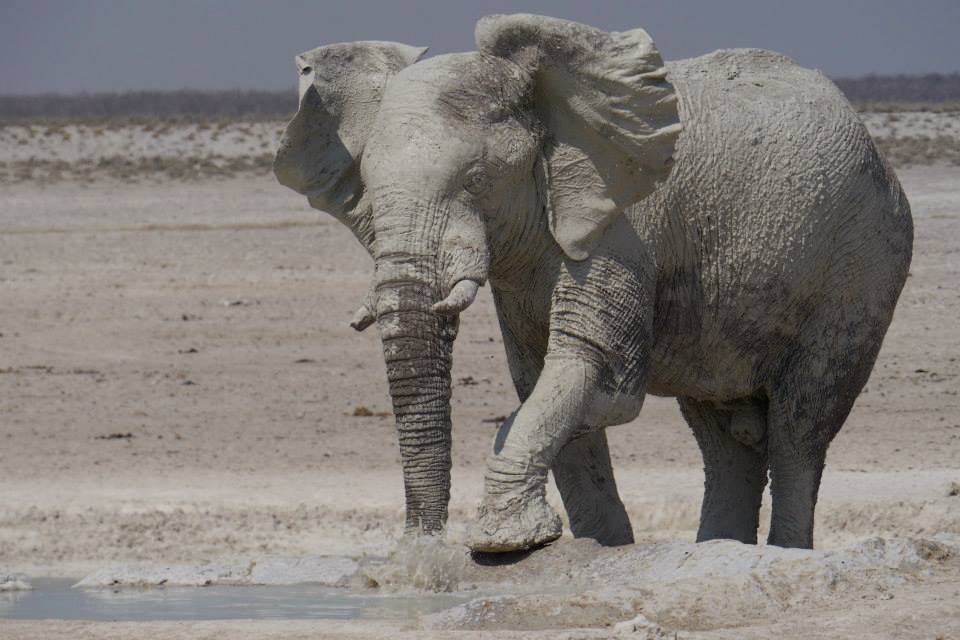
Etosha National Park Self-Drive Safari in Namibia
Etosha National Park reigns supreme as Namibia’s top safari destination. Covering a large and dusty floodplain in the country’s northern reaches, it is among the top wildlife-viewing destinations in Africa.
The park is an enchanting place to visit. While its scenery may be stark and inhospitable, it comes to life with dazzling wildlife displays that are among the best on the planet.
The sheer number of animals that wander the floodplains of Etosha is astounding. Along the park’s dusty roads, giraffes move gracefully through the trees, oryx stand regally before the salt flats of the Etosha Pan, and dozens of zebra, springbok, impala and heartebeest dart off into the distant plains.
Even casual self-drive safaris provide wildlife shows that rival any you might see on TV.
ETOSHA NATIONAL PARK SAFARI
Etosha National Park is an undeniable highlight of any Namibia itinerary. The park is famous for housing four of Africa’s Big 5, and for its isolated watering holes that attract animals in droves.
Etosha is an unforgettable safari destination and one of the best budget options in Africa. Even if you’ve experienced some of southern Africa’s other great parks—Kruger and Hluhluwe-Imfolozi in South Africa, the Okavango Delta in Botswana, South Luangwa in Zambia, for example—you’ll likely be astounded by the quality and quantity of Etosha’s wildlife sightings.
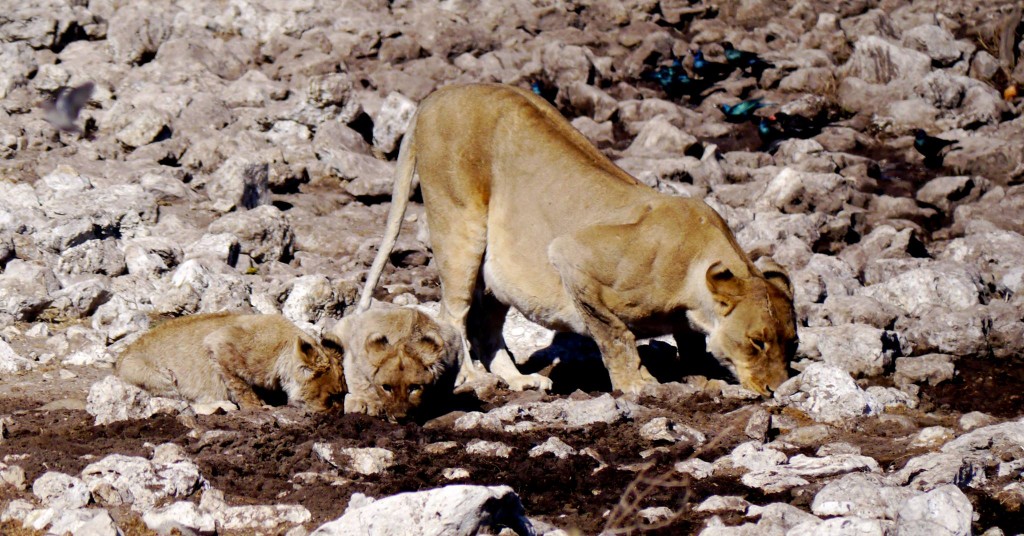
Yet despite Etosha’s accessibility and the ease of its self-drive safaris, visiting the park requires a bit of advanced planning. Campsites in Etosha fill up quickly. Some seasons provide better wildlife-viewing than others. The park can take time to traverse.
Researching an itinerary, booking accommodation in advance, and traveling during peak season (even though it does mean larger crowds) will ensure an absolutely incredible and unforgettable African safari experience.
ETOSHA NATIONAL PARK MAP
Etosha National Park covers over 22,000 square kilometers. A majority of the park’s camps, lodges and watering holes lie on the eastern part of the park, below the vast Etosha Pan.
The entire western part of the park is remote and seldom-visited. Access used to be blocked off and restricted to those staying in the Dolomite Camp, but it has since been open to the public.
I have not personally explored the western reaches of Etosha National Park, despite my multiple trips to the park.
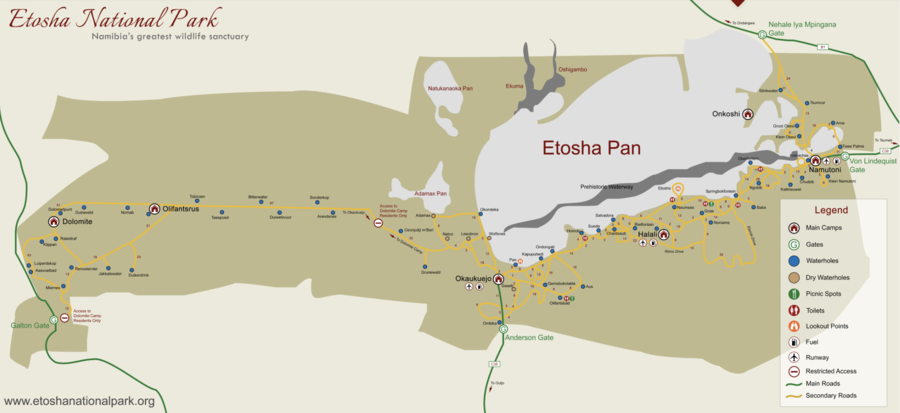
Etosha National Park has four entrance gates. Coming from the north, is the Nehale ly Mpingana Gate. This is the gate that I used to enter the park both times, since I was coming from Ondangwa.
On the east side, near Tsumeb, lies the Von Lindequist Gate. It is the most popular among visitors.
The Anderson Gate is located just south of Okaukuejo. If you’re traveling to or from Sossusvlei or the Skeleton Coast, it is the gate that you’ll probably use.
And on the far western side of the park lies the Galton Gate. It is the most seldom used of Etosha’s Gates, though it is no longer restricted.
THE ETOSHA PAN
Etosha means “Great White Place” in Oshindonga. The name refers to the Etosha Pan—an endorhaic basin that takes up a large swath of the park. The Etosha Pan covers almost a quarter of the park. It is its most distinctive geographical feature.
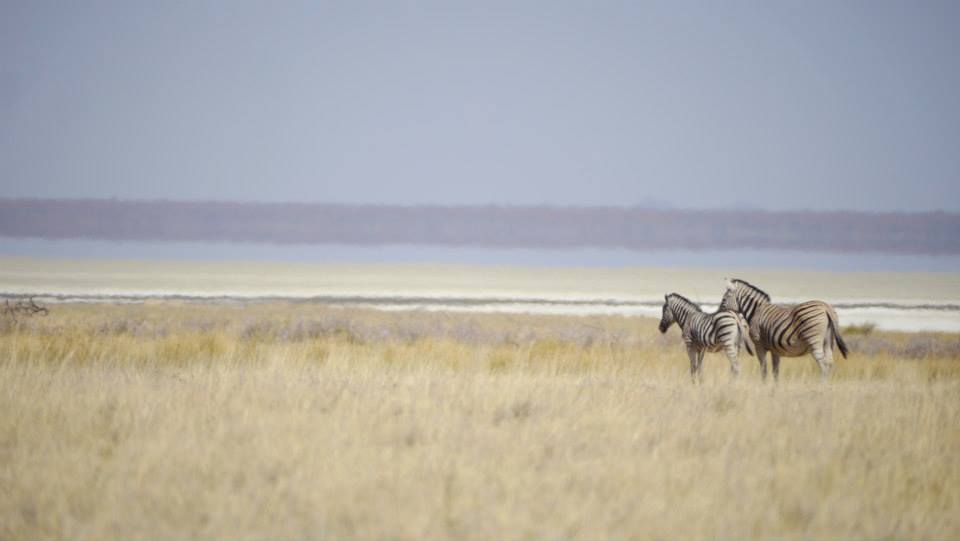
The 120-kilometer-long pan is a dry salty lakebed. During the rainy season, it becomes a muddy expanse that attracts thousands of migrating birds.
Prevailing theories suggest that the pan was originally a lake fed by the Kunene River. As climate began to shift, so too did the river. It now flows north of the national park and forms Namibia’s border with Angola.
BEST WATERHOLES AT ETOSHA
Etosha National Park’s waterholes each have their own character. Some occur naturally, others are fed artificially from boreholes. Due to the park’s limited water sources, animals frequent these waterholes on a regular basis.
It is important to remember that the water levels of the holes can vary, as can the number of animals. Depending on the rainfall and the migration of the animals, some wateringholes can be teeming with wildlife during your visit and others can be completely deserted.
But that’s precisely why safari-going is so much fun. It is totally unexpected and unpredictable.
-
KING NEHALE WATERHOLE
The flood-lit King Nehale waterhole lies adjacent to the Namutoni Camp. It is Etosha’s largest waterhole.
While we didn’t have much luck with animal-spotting from King Nehale’s platforms, we did enjoy the cacophony of song that acted as our soundtrack. The watering hole’s tall reeds and lush vegetation attract flocks of birds at sunrise and sunset.
Nearby, you’ll also want to check out Klein Namutoni for an opportunity to see herds of elephants, giraffes, and springbok.
-
KALKEUHEL WATERHOLE
The Kalkeuhel Waterhole is among the most impressive in eastern Etosha.
During my first visit to Kalkeuhel, I saw a kudu being encircled by a pack of hyenas.
It was one of the most dramatic encounters I’ve witnessed on a safari to date.
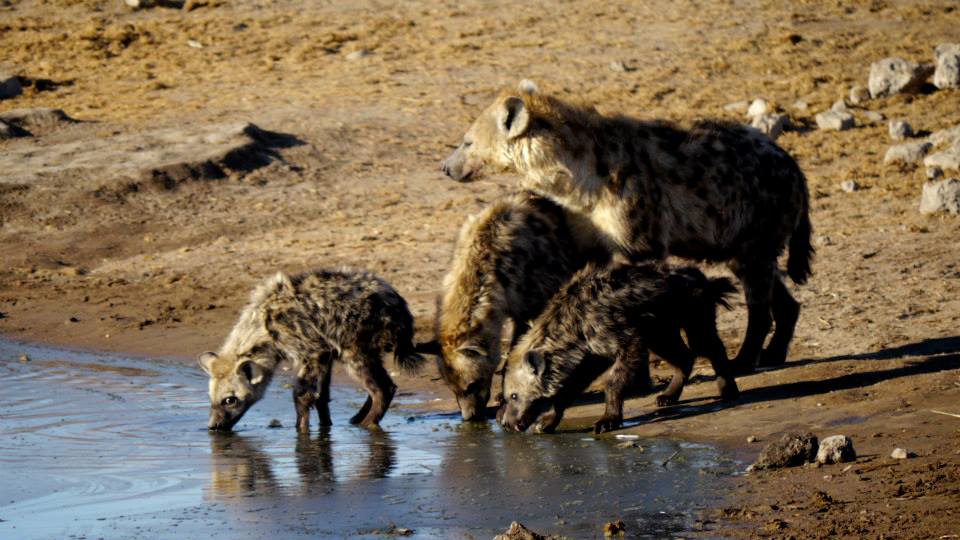
We sat in front of the waterhole for what must have been two hours, watching the scene unfold.
I still don’t know if the kudu got away.
-
MORINGA WATERHOLE
The Moringa waterhole lies adjacent to the Halali Camp. Like Namutoni’s waterhole, it remains lit past sunset and campers can watch the animals come and go at night.
We had fantastic luck at Moringa.
During the evening we spent at Halali, five black rhinos–one of the most endangered animal species in Africa–appeared just moments after we arrived.
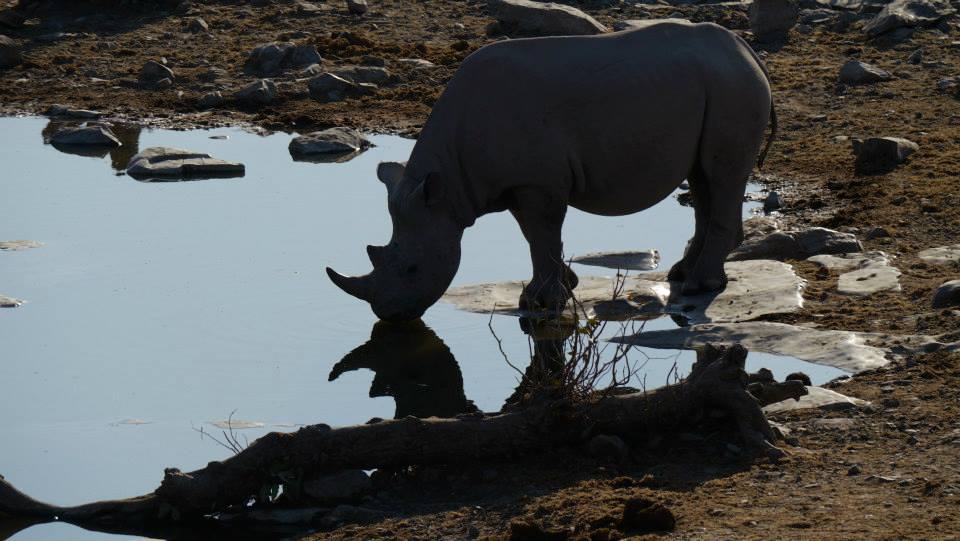
We quickly understood why Etosha National Park is regarded by many as one of the best wildlife sanctuaries on Earth.
-
GOAS WATERHOLE
Goas is among the best places in Etosha to see leopards. We didn’t see any elusive leopards during our Etosha safari, but we enjoyed seeing the dozens of wildebeest, zebra and impala who frequented Goas during our visit.
-
RIETSFONTEIN
During my visit to Rietsfontein, Etosha’s animals put on a show that rivaled the scenes on BBC’s Planet Earth. It was the best wildlife encounter I’ve experienced in my life to date.
Hundreds of animals gathered at the Rietsfontein waterhole, creating a bustling frenzy of activity. We saw zebras, wildebeest, springbok, oryx, kudus, impalas, warthogs and jackals. They were all sharing the waterhole, exercising a well-polished routine of waiting for their turn, moving toward the water in herds, and keeping a lookout for predators on the prowl.
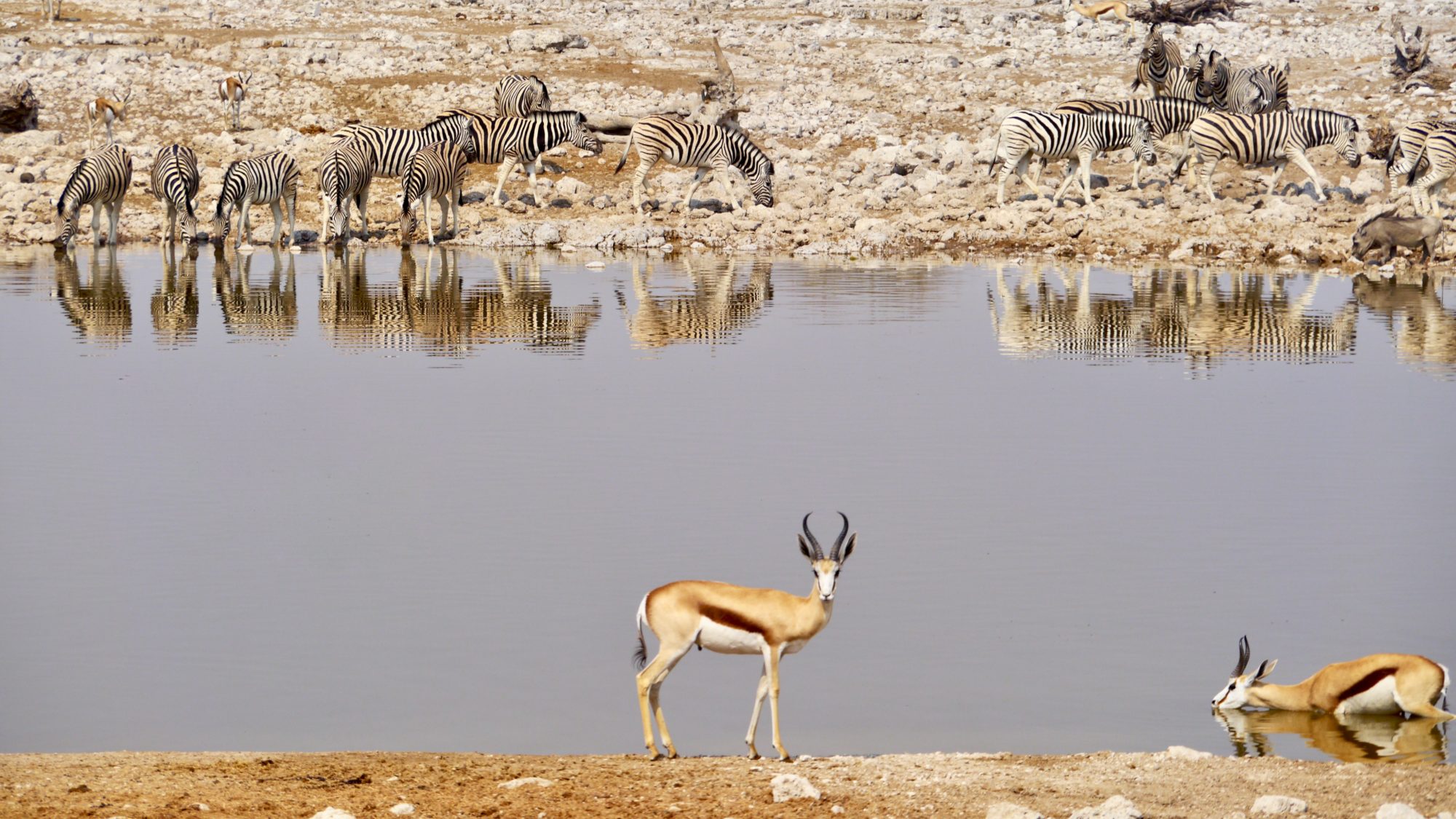
We sat in silence for nearly two hours, watching the activity unfold. I began counting zebras, but at 300 I lost count. There were hundreds of wildebeest too, lined up for their turn to take a sip of water.
Just as we were about to leave, three lumbering elephants entered the scene. The other animals subsided and made way for the towering mammoths.
There is an unspoken language between these animals—an understanding and a hierarchy that comes with thousands of years coexisting and sharing the same habitat. Such an interaction and communication is mesmerizing to witness.
-
OKAUKUEJO WATERHOLE
The Okaukuejo waterhole is right next to the Okaukeujo rest camp. It is floodlit and draws black rhinos almost every night. This is considered by many to be the best place in Africa to see the endangered black rhino.
During our visit, Okaukuejo did not disappoint. At one point we counted seven black rhino and five elephants jostling for water at the same time.
-
OKONDEKA
I had fantastic luck spotting plains animals at Okondeka. The watering hole’s wide open spaces and position at the edge of the Etosha Pan provided fantastic zebra, wildebeest and antelope sightings.
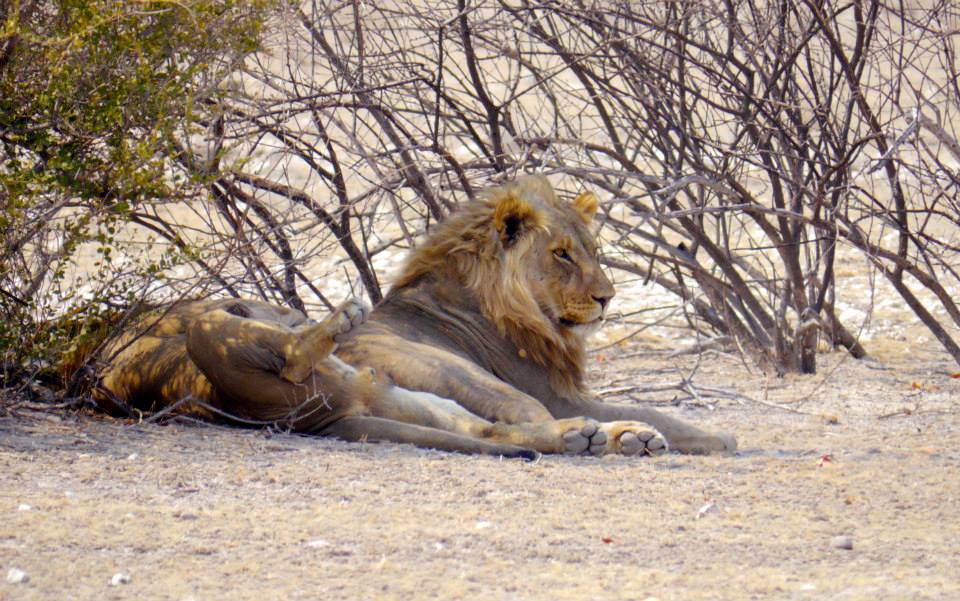
I also witnessed lions resting in the shade of the trees.
WESTERN ETOSHA
West of Okaukuejo and the Adamax Pan, the park becomes even more off-the-beaten-path. This is Etosha’s Wild West.
Until recently, much of western Etosha was a restricted zone. Only licensed tour operators and visitors staying at the exclusive Dolomite Camp could traverse the large tract of land.
Western Etosha boasts reddish soil, unlike the rest of the park where is the soil is predominantly white. The western part of the park is also hillier, with undulating topography near the Dolomite Camp.
HOW MUCH TIME SHOULD YOU SPEND IN ETOSHA?
On my first visit to Etosha, I spent three days in the park, following a visit to the Kunene Region in northwestern Namibia.
During our three days in Etosha, we spent one night at the Namutoni Camp, one night in Halali and the final night at Okaukejo.
Our itinerary allowed us to enter at the park’s main gate (King Nehale), experience all the main areas of the park, and exit at the Anderson Gate en-route to the red-rock landscapes of Damaraland.
Namibia’s top safari destination is vast and varied. While you can certainly have a memorable day trip to the area, I would recommend spending at least three days in Etosha.
ETOSHA SELF-DRIVE SAFARI
Namibia is not an easy country to get around without a car. It is one of the world’s most sparsely populated countries and a difficult place to navigate using public transport.
Thus, unless you’re traveling to Etosha as part of a tour from Windhoek or Swakopmund, renting a car and driving to the park will be your best and most logical option.
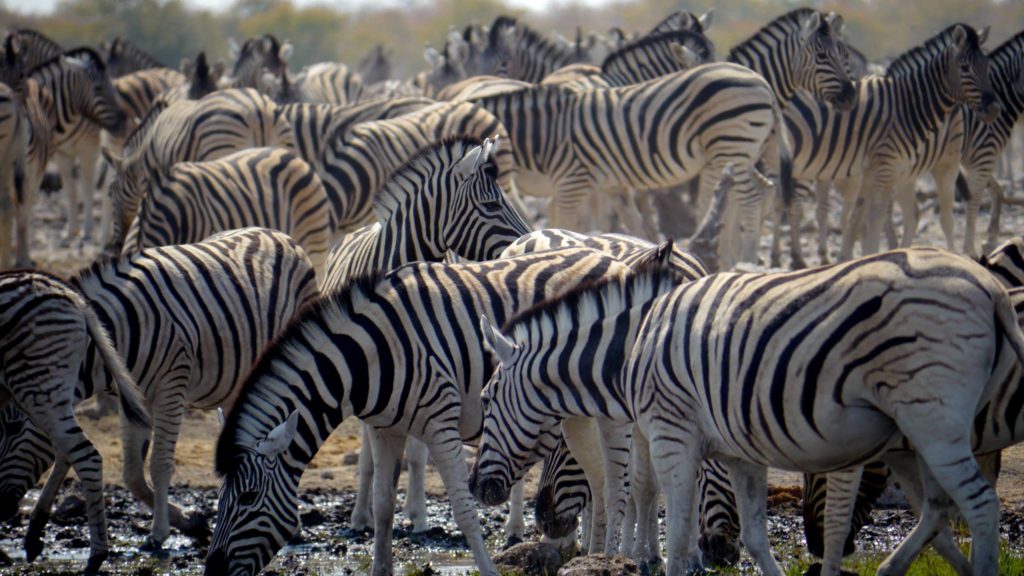
Though the unpaved roads in Etosha are suitable for most cars, you’ll definitely benefit from having a 4WD vehicle.
TOURS OF ETOSHA NATIONAL PARK
Organized tours can be a convenient way of visiting Etosha.
Chameleon backpackers in Windhoek advertises Namibia tours that include Etosha. The tours are affordable and perfect for budget travelers who don’t have their own cars.
Additional safari tours of Etosha can be found online. They range from half-day trips to multi-day excursions.
ETOSHA ENTRANCE FEES AND HOURS
The fee to enter Etosha National Park is roughly NAD150 ($8USD) per 24 hour period. Cars cost an additional NAD50 ($2.50). The affordable entrance price and ability to self-drive makes Etosha one of the best budget national parks in Africa.
The park’s hours change weekly, as the entrance gates are open from sunrise to sunset. Each campground operates from dawn to dusk as well, though you can often view animals from the floodlit waterholes during afterhours.
Beware that driving around Etosha can be dangerous in the dark. You will face a fine if you attempt to explore the park outside the designated hours.
ETOSHA NATIONAL PARK ACOMMODATIONS
The beauty of traveling to Etosha is that there is a little something for everyone. Many of Africa’s wildlife parks cater to wealthy travelers who are willing to spend thousands of dollars on luxurious game lodges. But Etosha’s six camps offer a wide range of accommodation options—from basic campsites, to glamping, to upscale resorts.
I recommend staying at one of the six lodges that lie within the park’s boundaries during your visit to Etosha. Spending a night at one of the six camps will ensure that you have plenty of opportunities for wildlife-spotting at dawn and dusk.
Just outside the park’s entrance gates, private accommodation options offer alternative places to stay.
ETOSHA CAMPS AND LODGES
While in Namibia, I had the opportunity to stay at three of the four main campsites in the national park—Okaukejo, Halali and Namutoni. Exploring Etosha National Park over the course of a few days and staying at each campsite provides the best opportunity to experience all that the park has to offer.
-
OKAUKEJO CAMP
Of the campsites in Etosha, the Okaukejo Camp is the busiest by far. The campground’s proximity to the Anderson Gate (and Windhoek) means that it fills up quickly and is best booked in advance.
-
HALALI CAMP
The Halali Campsite is the park’s most central accommodation option. It is the largest campground in Etosha. Due to its location, Halali provides quick access to many of the parks most popular waterholes.
-
NAMUTONI CAMP
On the eastern side of the Etosha National Park near the Von Lindequist Gate, Namutoni centers around a beautiful old German Fort.
The Namutoni Camp features shaded grassy areas. It is a pleasant place to spend a night or two.
-
OLIFANTSRUS CAMP
The newest camp in Etosha, Olifantsrus is a camping-only location in the remote western reaches of the park. It is surrounded by waterholes and is a fantastic spot for those who wish to camp in relative seclusion, away from the crowds.
It is the sole camping-only spot within Etosha.
-
DOLOMITE CAMP
The Dolomite Camp features 20 chalets built on elevated wooden decks. The camp lies on the remote western edge of Etosha and only hosts about 40 people at any given time. It does not have any spots for camping.
The most accessible access to Dolomite is via the Galton Gate.
-
ONKOSHI CAMP
Onkoshi Camp lies along the eastern rim of the Etosha Pan, on a secluded peninsula.
The camp, located away from the tourist routes, offers 14 chalets and one honeymoon suite. There are no designated camping spaces.
Housing a maximum of 30 guests at any given time, it is the quietest camp at Etosha National Park.
LODGING OUTSIDE OF ETOSHA’S GATES
In addition to the park lodges and campsites, there are a handful of fantastic accommodation options outside of Etosha’s gates.
Near the Von Lindequist entrance, Mushara Bush Camp and Mokuti Etosha boast excellent reviews.
Outside of the Anderson Gate, the Etosha Oberland Lodge offers a tranquil retreat with active waterholes nearby.
BEST TIME TO VISIT ETOSHA NATIONAL PARK
Etosha has two seasons: the wet season, and the dry season. The wet season runs from November to May and the dry season from June to October.
During the wet season, the land is green and lush, with dense foliage and plump grasses. Abundant water sources mean that animals spread out over the wide plains and disappear into the thickets of trees. Some roads are closed and driving becomes trickier.
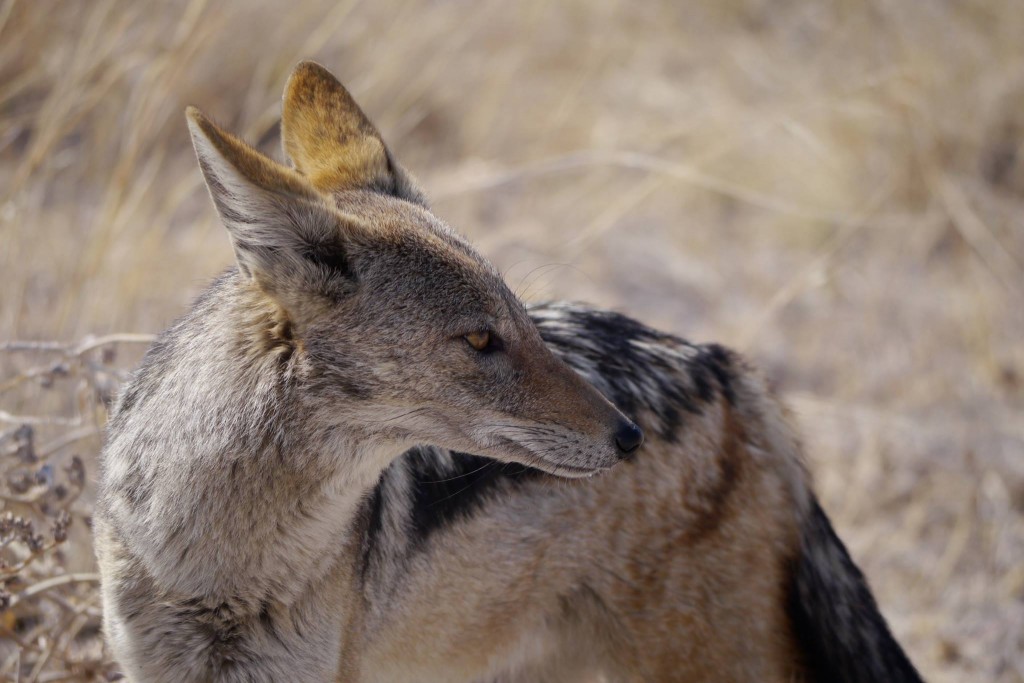
The dry season in Namibia (April to October) is the best time to visit Etosha. During these cooler winter months, the park’s water sources dry up–leaving the animals to concentrate around the few waterholes that are scattered about the park’s vast plains.
***
While some places require driving for hours in search of wildlife, Etosha’s sparse vegetation and isolated watering holes have the magic of bringing the animals directly to you.
No matter how many times we spotted animals in their natural habitat, the thrill of wildlife-viewing at Etosha National Park did not diminish.
The park’s wildlife spectacles are so captivating that they can be impossible to illustrate with words.
_________________________________
Did You Enjoy this Guide to Etosha National Park? Pin It!
